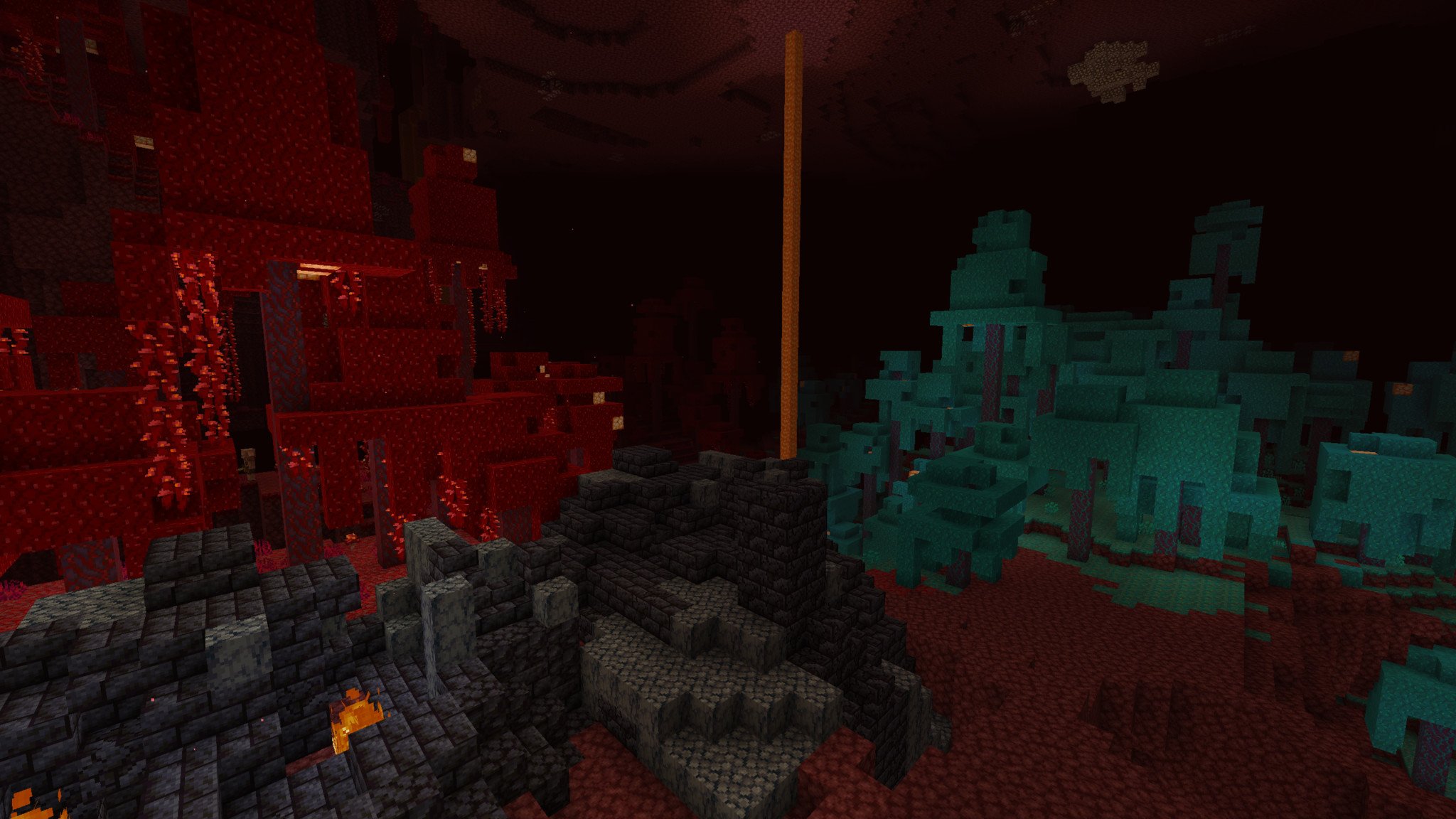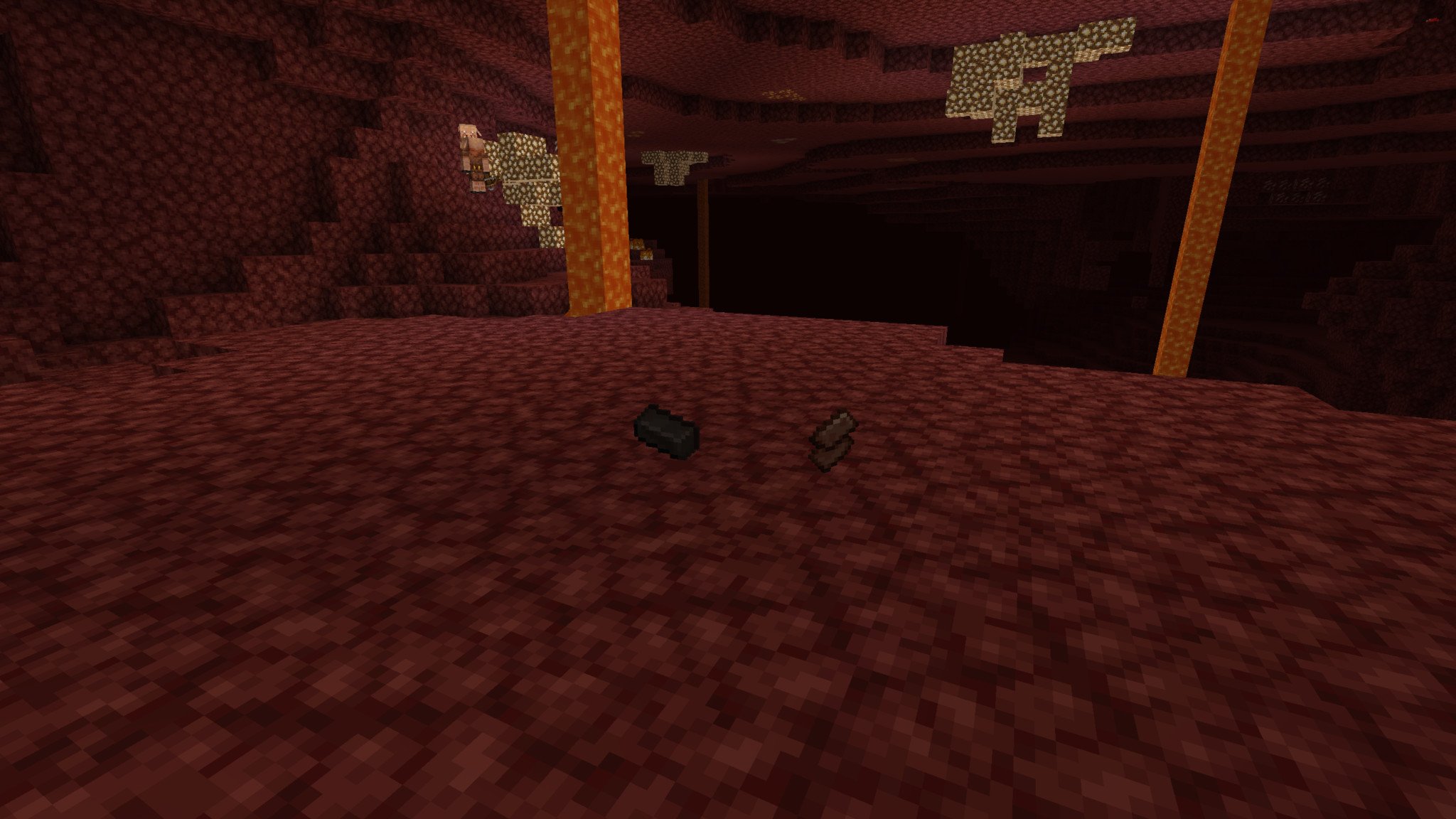Minecraft guide: How to find all the new blocks and items in 'the Nether Update'
All great things to find in this world.

The Nether Update added a ton of new content to Minecraft, with lots of new blocks and items available for players to find. While some of the new content will, of course, require crafting, there's still a lot of new raw materials you can find just taking advantage of the newly overhauled Nether dimension, either through mining, exploration, looting, or even bartering.
Here's everything you need to know about finding all the blocks and items in the Nether Update:

Available everywhere you play.
Minecraft is an inarguable and complete success. It has sold copies in the hundreds of millions, has a huge following of dedicated players, and lets you unlock your every creative desire. It's also available on every platform imaginable, including Xbox One, Windows 10, Playstation 4, and Nintendo Switch. Play with anyone, and play anywhere.
How do I find all the blocks and items in the Nether Update?

To make it a little easier to find your way around, we're going to be splitting all the new goodies in the Nether Update into two categories: blocks and items. Blocks can usually be found naturally in the world, while items often have to be crafted or created (but in the case of the items in this list, found or traded for). The Nether Update has plenty of both, so be sure to scrutinize the entire list to make sure you know exactly where to go.
Blocks

Blocks is undoubtedly one of the largest and most important categories in Minecraft since it's these objects that make up the world and provide players with the base ingredients required for most crafting recipes. The Nether Update adds a lot of blocks, some decorative and some providing a huge amount of use whenever you intend to stay in the Nether. Most of the Nether Update's blocks can be found naturally in the world, and mined with a pickaxe or other tool. Some can also be found while looting bastion remnants, or bartering with piglins.
In the world

Blackstone is very special, as it's essentially a replacement for cobblestone in crafting recipes. That's right, even if you're lost in the Nether for ages at a time, you can still craft necessary stone-based recipes by just using Blackstone instead.
- Look for the basalt delta biome where it generates in huge numbers.
- It's also used by piglins to build bastion remnants, and can spawn in small veins in almost any Nether biome.
- Needs to be mined by a wooden pickaxe or better.
Basalt isn't as useful as Blackstone, but still might be worth grabbing if you dig its aesthetic for your Nether-based abode. It's a decorative block that has a polished variant for even more design freedom. It's also possible to generate basalt on your own, which is awesome.
All the latest news, reviews, and guides for Windows and Xbox diehards.
- Also found in basalt delta biomes in large numbers.
- Can be found in soulsand valley biomes as large pillars and inside of bastion remnants.
- Basalt can be generated by lava flowing over soul soil that is next to blue ice.
- Needs to be mined by a wooden pickaxe or better.
Soul soil is the counterpart to the pre-existing soul sand, but in this case, it doesn't slow mobs. Instead, soul soil burns with an intense blue flame similar to netherrack. Soul soil can be used to craft things like blue torches and campfires, providing a source of light and unique decorations. If you're summoning the wither, you can substitute soul sand with soul soil.
- Only found in soulsand valley biomes.
- Can be mined with anything, but is fastest with a shovel.
Crying obsidian is one of the most special new blocks added in the Nether Update. It implements a brand-new mechanic that makes living in the Nether long-term much more viable. Using crying obsidian, you can craft respawn anchors that allow you to respawn at a specific place in the Nether. It can be a little hard to find enough to do so, at first.
- Only found near ruined portals, both in the Nether and the Overworld.
- Needs to be mined with a diamond pickaxe or better.
Ancient debris is a lot like crying obsidian in the way that it dramatically changes how the Nether is useful to the player. Ancient debris is the first step towards netherite, which is a rare ore that is stronger and superior to diamond in every single way, allowing players to massively upgrade their gear. It's extremely uncommon, but patient players shouldn't have any problems finding what they need.
- Will never be exposed to air, and is only found in lower levels of the Nether. Y-level 15 is the most common place to find ancient debris.
- Is impervious to lava and burning, and is extremely resistant to blasts. Ancient debris can withstand TNT blasts.
- Needs to be mined with a diamond pickaxe or better.
Stems are a pseudo-wood replacement found in the Nether's forest regions and makes up the stalks of the giant fungi that grow there. Crimson and warped stem are identical in use but differ in appearance. These stems aren't flammable, and therefore can't be used as fuel or to make charcoal, but can substitute wood in any wood-based crafting recipes, just like Blackstone to cobblestone.
- Can only be found in crimson forest biomes or warped forest biomes.
- Can be mined with anything, but is fastest with an axe.
Nylium is a unique variant of netherrack that excels at growing fungi in the Nether. There are crimson and warped varieties. Bone meal used on nylium will grow vegetation from the biome the nylium is from, and bone meal used on the same type of fungi as the nylium can be grown into huge fungi where players can mine stems from. It's useful for late-game farms in the Nether.
- Can only be found in crimson forest biomes or warped forest biomes.
- Can be generated by using bone meal on regular netherrack that's adjacent to nylium.
- Needs to be mined with a wooden pickaxe or better.
Other vegetation There were too many individual kinds of vegetation to list them all separately, but the Nether Update also added crimson and warped fungi, shroomlights, weeping vines, nether sprouts, and crimson and warped roots. Crimson fungi is useful for breeding hoglins, while warped fungi is useful for scaring hoglins or riding striders. Shroomlights are a source of light. Weeping vines can be climbed, while roots are simply decorative blocks.
- All of the Nether's vegetation can only be found in crimson forest biomes or warped forest biomes.
- Fungi and roots can be found in both biomes, with a different variety for each biome.
- Shroomlights can also be found in both biomes, but are identical in each.
- Weeping vines can only be found in crimson forest biomes, while nether sprouts can only be found in warped forest biomes.
- All of this vegetation can be mined with anything, with shroomlights being fastest with a hoe.
Nether gold ore is a variant of netherrack that has visible veins of gold, and can be mined for gold nuggets. As gold is a valuable resource and currency in the Nether, it's in the player's best interest to grab any nether gold ore they spot along the way. Nether gold ore does not drop gold ingots though, so it's less efficient.
- Can be found pretty much anywhere in the Nether between Y-levels 10 and 117.
- Drops gold nuggets, which can be increased by the Fortune enchantment.
- Smelting nether gold ore blocks gives gold ingots, so the Silk Touch enchantment is very useful here.
- Needs to be mined with a wooden pickaxe or better.
Gilded Blackstone is another source of gold nuggets in the Nether, but is not always guaranteed to drop gold nuggets, and can instead drop itself (just like gravel). Once again, these are gold nuggets we're talking about, so it's less efficient than gold ore, and Gilded Blackstone is even less efficient than nether gold ore.
- Can be found in bastion remnants.
- Has a chance of dropping gold nuggets, or will just drop itself. The Fortune enchantment increases the chance of a gold nugget drop.
- The Silk Touch enchantment guarantees the Gilded Blackstone will just drop itself.
- Needs to be mined with a wooden pickaxe or better.
Chain blocks are decorative blocks that, you guessed it, resemble chains, opening up a lot of creative designs for builds. Chains can be crafted, of course, but if you know where to look you can also find them out and about in the world, letting you start or add to your collection whenever you find them.
- Chain blocks can be found in bastion remnants or rarely ruined portals.
- Needs to be mined with a wooden pickaxe or better.
Looting

Crying obsidian can of course be found in ruined portals, but ruined portals can be uncommon, and crying obsidian never generates in large numbers here. To help find all the crying obsidian you need to craft a respawn anchor, you'll also want to look at other sources.
- Can be found in many bastion remnant chests.
- Has a good chance to be found in stacks of one to eight blocks.
Ancient debris is even more rare than crying obsidian, always being obscured underground in the deepest sections of the Nether. Fortunately, it can also be found in bastion remnants, giving players another way to add more netherite to their supplies.
- Can be found in some bastion remnant chests.
- Has a low chance to be found in stacks of one to two blocks.
Gilded Blackstone Need more Gilded Blackstone and weren't able to mine enough from the walls of the bastion remnant? That's alright because you can also find it in the chests of bastion remnants. And, if you're looking at it for decorating, it won't be destroyed by your pickaxe in exchange for gold nuggets.
- Can be found in most bastion remnant chests.
- Has a good chance to be found in stacks of one to eight blocks.
Bartering

Blackstone is quite common in basalt delta biomes, but if you don't have one of those nearby (and you do have some piglins), you have another avenue to potentially get a little bit of Blackstone, albeit inefficiently.
- Can be bartered from piglins for a gold ingot.
- Can be given in stacks of eight to sixteen blocks.
Crying obsidian can also be earned from bartering, making crying obsidian the only block you can find, loot, and barter for in the Nether! Fascinating. If you have a surplus of gold ingots lying around, this is another way to potentially get more crying obsidian for respawn anchors.
- Can be bartered from piglins for a gold ingot.
- Can be given in stacks of one to three blocks.
Items

Most of the new items in the Nether Update can only be crafted, often with the resources listed in this guide, and can't be found while exploring the world. There are a few notable exceptions, however, whenever you're lobbing gold ingots at piglins or taking a chance exploring a bastion remnant. In fact, some of these items can only be found by looting or bartering, and cannot be crafted by the player. Now things are getting interesting.
Looting

Netherite scraps can't be found naturally in the world, unless you mine ancient debris and smelt it, but it can be looted if you know where to look. This is the second step towards making netherite gear, and even scraps are still very valuable to the player. Definitely don't pass them up if you see them.
- Can be found in some bastion remnant chests.
- Has a low chance to be found in stacks of one.
Netherite ingots are the third step towards netherite gear, combining netherite scraps with gold ingots. This makes them even more rare and valuable, but you can still find them by looting chests. Don't expect them to be in every chest though, as ingots are just as rare to loot as they are hard to craft.
- Can be found in very few bastion remnant chests.
- Has a decent chance to be found in stacks of one.
Bartering

Netherite hoes are the best possible version of the least often used tool. These hoes are stronger, faster, and more durable than any other hoe, even diamond, but are very difficult to get your hands on one — unless you do a lot of bartering and get lucky.
- Can be bartered from piglins for a gold ingot.
- Has a very low chance of being bartered.
- Can be given one at a time.
Enchanted book with Soul Speed is one of the only ways to get the Soul Speed enchantment. If you want this unique Nether enchantment that lets you move faster on soul sand and soul soil for your diamond or netherite boots, you'll need this book. And you can only get it from bartering.
- Can only be bartered form piglins for a gold ingot.
- Has a very low chance of being bartered.
- Can be given one at a time.
Iron boots with Soul Speed If you don't need your Soul Speed enchantment to be one a super nice pair of boots, piglins have a higher chance of giving you iron boots with Soul Speed. This still nets you a rare enchantment, but hopefully for a bit less gold.
- Can only be bartered from piglins for a gold ingot.
- Has a very low chance of being bartered.
- Can be given one at a time.
If you can't find it, craft it
There's a substantial list of things you can find in the Nether Update without opening the crafting menu, but endless possibilities are opened up when you take the tools and resources you've collected and combined them into glorious creations. If you can't find something, make it! Ways to respawn in the Nether, blocks that ensure you'll never be lost, a serious upgrade to all your gear, and more awaits in the Nether Update for Minecraft. Don't worry, we're working on that guide too.

Available everywhere you play.
Minecraft is an inarguable and complete success. It has sold copies in the hundreds of millions, has a huge following of dedicated players, and lets you unlock your every creative desire. It's also available on every platform imaginable, including Xbox One, Windows 10, Playstation 4, and Nintendo Switch. Play with anyone, and play anywhere.
Xbox
Main

Zachary Boddy (They / Them) is a Staff Writer for Windows Central, primarily focused on covering the latest news in tech and gaming, the best Xbox and PC games, and the most interesting Windows and Xbox hardware. They have been gaming and writing for most of their life starting with the original Xbox, and started out as a freelancer for Windows Central and its sister sites in 2019. Now a full-fledged Staff Writer, Zachary has expanded from only writing about all things Minecraft to covering practically everything on which Windows Central is an expert, especially when it comes to Microsoft.
